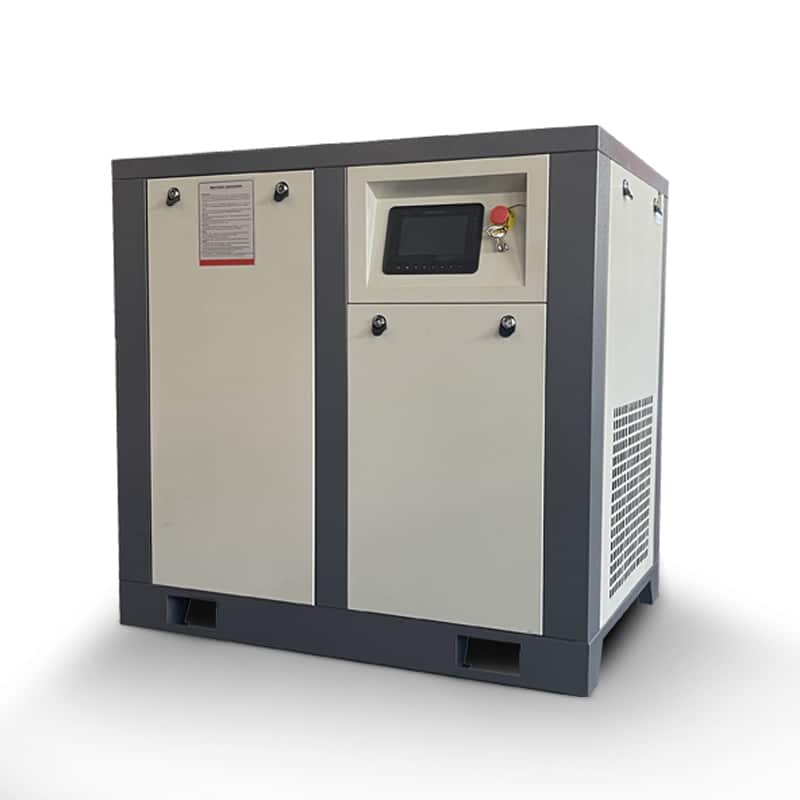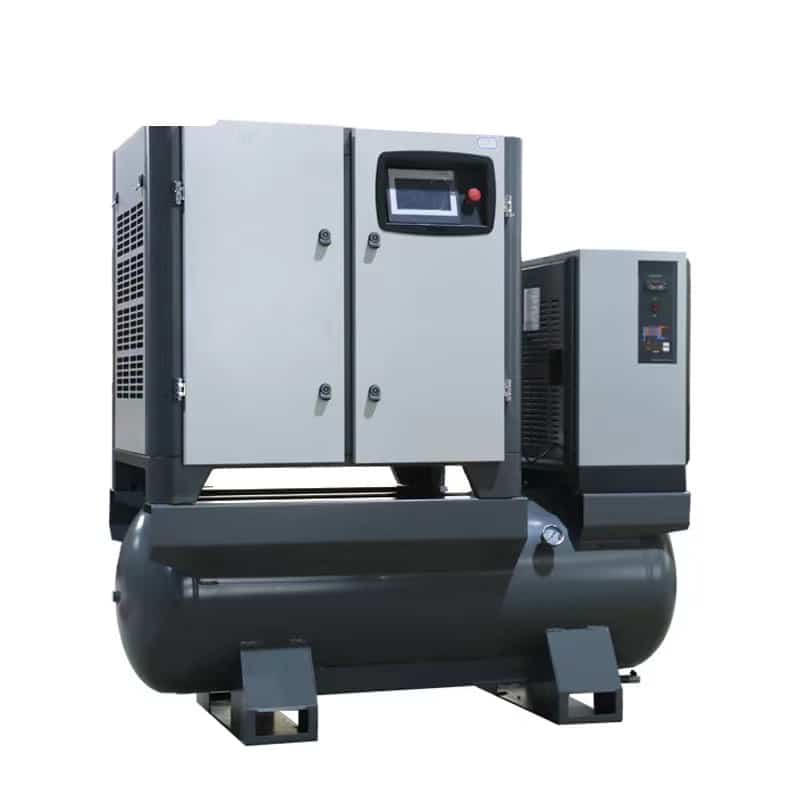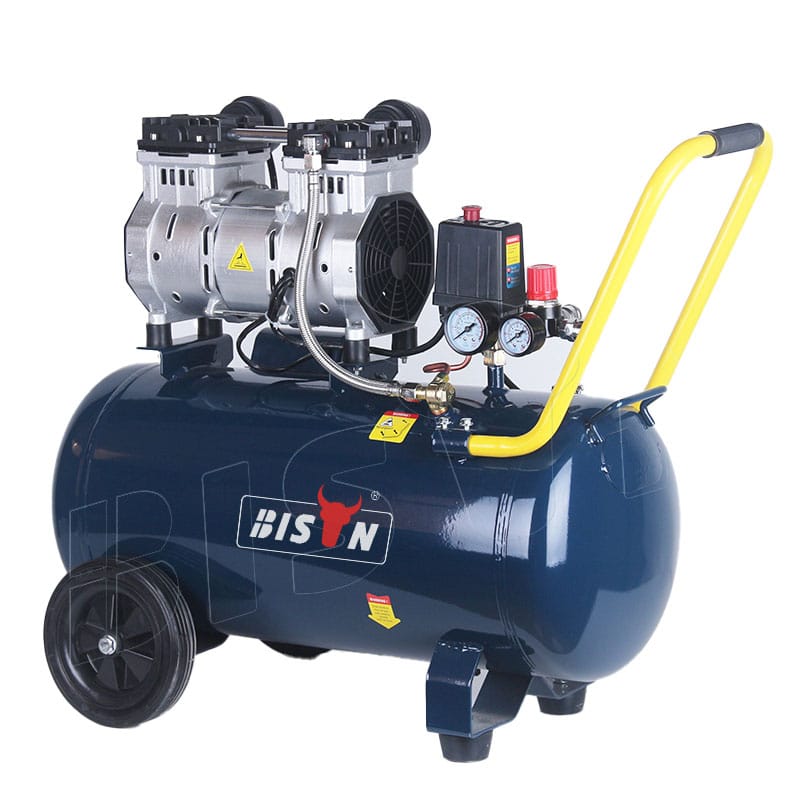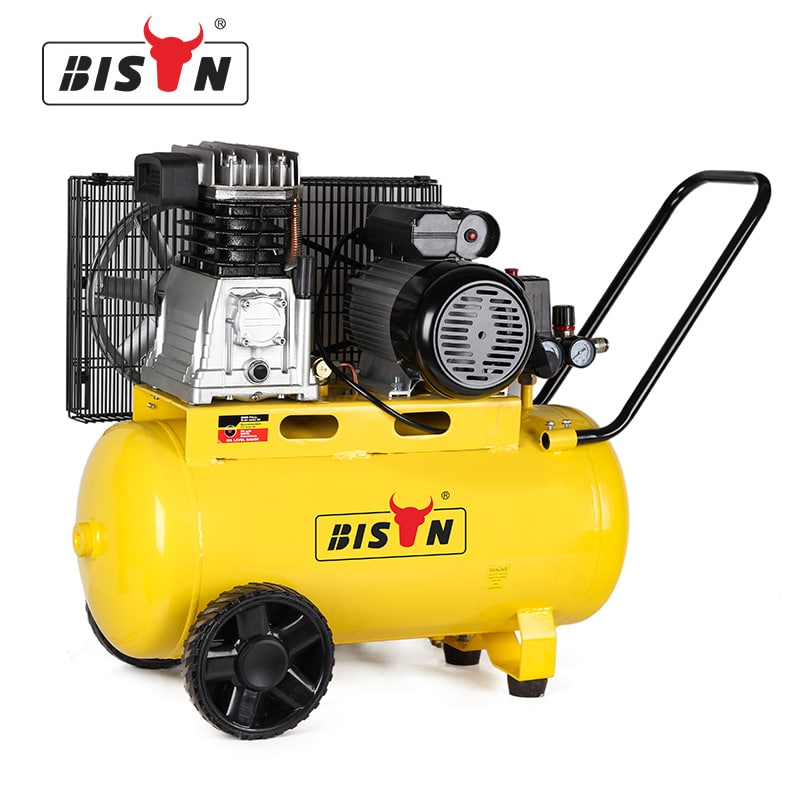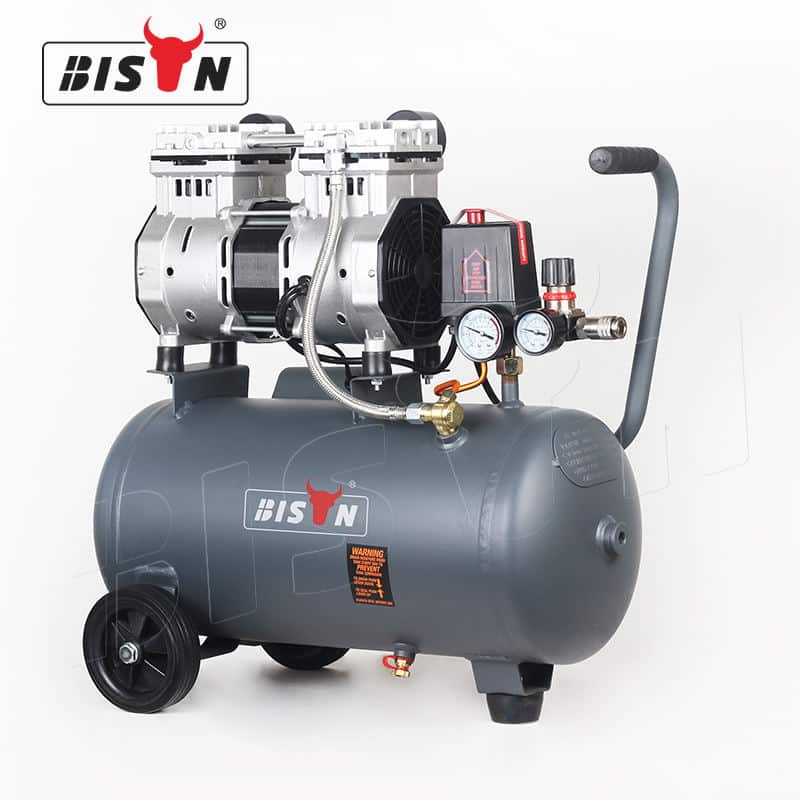air compressor blog
Does a rotary screw compressor need a tank
- Jan 15, 2024
The essential functions of the tank are to store the compressed air and to reduce the pulsation and noise associated with the compressor.
Compressed air is drawn from the atmosphere by the compressor. The compressed air is then stored in a tank until it is needed. As the pressure in the tank increases with each compression cycle, the tank helps regulate and stabilize the pressure output of the compressor. This is important because it prevents pressure fluctuations that could damage equipment or injure personnel.
In addition, when the rotary screw compressor is used for a long time, it can generate a lot of noise. The tank absorbs some sound energy, which helps reduce noise levels.
In this blog post, we’ll answer the question “does a rotary screw compressor need a tank”.
Introduction to rotary screw air compressors
Most people associate reciprocating air compressors, commonly called piston air compressors, with air compressors. These air compressors gather the compressed air in an air receiver tank after using a piston to force air into a condensed area. Reciprocating air compressors have been around for many years and are comparatively cheap.
Rotary screw air compressors are a new, improved type of air compressor. Compared to more conventional reciprocating types, they could be more costly. Nevertheless, fleet managers of service trucks and vans around the world use rotary screw air compressors due to their many benefits.
For rotary screw air compressors to function, air must be caught between two mesh rotors, and its volume must be decreased as the air passes between the rotors. This volume reduction produces compressed air and is helpful for many tasks, including inflating tires and running air tools.
Basic functions and operations
Pressurized systems with numerous interconnected parts that operate together to compress air are rotary screw air compressors.
In many rotary screw air compressor systems, oil and air are necessary components. Synthetic oil is as essential as atmospheric air, but compressed air is the ultimate goal. The not-so-secret weapon that allows the rotary screw to operate so well for such a low price is oil, which is used to lubricate the system.
However, using oil also adds complexity to the air compressor system. Rotary screw air compressors require not only a compressed air generation mechanism but also oil circulation, filtering, and recycling.
Two separate systems work together. One creates air, and the other circulates oil. Standard methods look something like this:
a) Air compressor system flow
A step-by-step guide to system flow can help explain how the air and oil processes work together within an integrated system:
b) System flow process
- The inlet valve allows ambient air to enter.
- The regulator’s valve controls the system pressure overall and receives airflow via the system pressure line.
- Rotors in the air end compress and combine air and oil.
- Through the exhaust hose, oil-mixed air leaves the atmosphere.
- The base oil mixed with the oil enters the separation tank, separating most of the oil from the air.
- The residual oil mist is trapped in the air as air passes through a secondary separation filter.
- The system releases air free of oil. The atmosphere is gathered in an air receiver tank if one is utilized.
- After moving the oil to an oil cooler and cooling it down, it is sent to an oil filter.
- The oil filter captures any remaining debris in the oil.
- Recycled oil is returned to the air end through the scavenge return line.
It is easier to comprehend the overall flow of a process when it is visualized as a series of steps. However, these steps co-occur. When the air compressor is on, all the above steps happen simultaneously and continuously.
Types of rotary screw air compressors
There are two basic types of rotary screw air compressors: oil-injected and oil-free. The most popular kind of industrial air compressors are oil-fired screw compressors, which are effective in the majority of applications. There are a few subcategories to take into account within these main categories.
a) Base-mounted vs tank-mounted
Rotary screw compressors with a tank mounted on their chassis store compressed air in an integrated air receiver tank. They can be a complete solution if they have an integrated air dryer. Base-mounted rotary screw compressors are independent devices without built-in dryer systems or tanks. They offer more design flexibility for compressor systems. Plans for air drying and storing can be tailored to the project’s needs.
b) Fixed speed vs variable speed
Screw compressors can be fixed speed or variable speed. A fixed-speed compressor delivers 100% power 100% of the time, which is ideal for businesses requiring constant airflow; it is inefficient at low loads. In response to actual air demand, an air compressor with a variable speed drive (VSD) adjusts both motor speed and air output. Businesses with variable air demand during shifts or seasons can lower their energy consumption and operating costs by implementing a VSD rotary screw compressor.
How to choose a tank for a rotary screw compressor
a) Compressor motor size
The tank size should be according to the capacity of the compressor motor. Typically, a larger air receiver is used with a stationary unit, while a smaller receiver is used with a portable type.
b) Work pressure
This is important for both stationary and portable units. The pressure in the tank reflects the output pressure of the compressor. In other words, if your screw compressor produces 100 psi as its maximum working pressure, your storage tank should be held to at least that level. This means you need a larger tank or one large enough to accommodate this capacity.
For example, two 50-gallon tanks can be connected to a 100-gallon storage solution for a 200-psi screw compressor.
c) How much air will the compressor need to supply?
Compressors use different tools and equipment depending on how they are used. Larger equipment, such as pneumatic drills, impact wrenches, and sanders, require more air than nail guns or spray painting tools.
d) What kind of portability do you need
Depending on what you want to use the compressed air for, your system may need to be very portable. If so, you’ll want to choose an air receiver tank that has wheels and handles so it can be moved easily.
e) Materials for construction of storage tank
The weight and durability of the storage solution will rely on the building materials utilized. Steel tanks are the most common and very strong but can be very heavy. Aluminum tanks are lighter but less durable than steel tanks.
f) Maximum allowable pressure
This is the maximum pressure a storage tank can hold before it bursts. Choose a tank with the maximum working pressure of your compressor.
Ambient temperature and climate where the compressor will be used:
Choosing a tank that will function appropriately in extremely cold or hot environments in both low and high-temperature ranges is very important.
When choosing a rotary screw compressor, it is essential to select a model that has a tank that is large enough to accommodate your needs. A smaller tank will need to store more compressed air to meet the needs of more important equipment or tools. Tanks that are too large will increase compressor costs.
Essential factors to consider when using a rotary screw compressor
- The tank should be securely mounted in place.
- Always make sure the tank is well-ventilated.
- Do not use a pressure washer to fill the tank with water.
- Do not connect the compressor directly to an ungrounded outlet.
Rotary screw air compressor tank maintenance tips
Once your rotary screw compressor’s air tank is installed correctly, it’s essential to keep up with routine maintenance so you know it’s working perfectly.
Keep your tank in good condition by doing these things:
Regular cleaning is required to maintain compressor performance. Less regular cleaning can lead to buildup inside the unit, damaging critical valves, cylinders, and other moving parts.
- Keep the areas around the external surfaces of the tank free of dirt and debris.
- Periodically inspect the compressor tank for any dents, leaks, rust, or other signs of damage.
- Inspect all air compressor valves and fittings for damage and replace them as necessary.
- Ensure all electrical connections to the compressor unit are secure and free from corrosion or dirt.
- Make sure your screw air compressor is clean and dry before using it. If there is moisture in the tank when you first turn it on, allow it to warm up before continuing to use it. Doing this can lessen the likelihood that condensation will collect inside the unit, which could eventually lead to internal issues like water damage or internal component corrosion.
Anyone in need of a sturdy and dependable air compressor would be well advised to invest in a rotary screw compressor. To guarantee that the unit fulfills your particular requirements, it’s critical to consider the factors above when selecting a suitable model. You can extend the life of your compressor tank by using these suggestions and doing routine maintenance.
Advantages of a tank with a screw compressor
a) Offers energy storage
A receiver tank can serve as a temporary storage place for compressed air until you decide what to do with it. The stored compressed air can be used in emergencies, and the receiver tank can act as a supply tank. A receiver tank is a place to store excess energy and a backup in case of a sudden demand, surge in order, or if something goes wrong at the compressor end. A receiver tank is a lifesaver if you know how to maintain it well.
b) Acts as a stabilizer
When the compressed air demands are unstable, the pressure goes to the compressor. This requires frequent temporary shutdowns, wastes energy, and hampers compressor efficiency and productivity.
Having a receiver tank makes it easy to stabilize the process as the stored energy can meet the sudden demand, and the compressor can be given some rest or used in fixed cycles to produce efficient results.
c) Improves energy efficiency
Turning the compressor on and off repeatedly creates too many duty cycles for the compressor, leading to wasted energy. Having a receiver tank prevents such situations and thus helps improve energy efficiency. The power wasted in maintaining different cycles can be used for meaningful processes, increasing the system’s productivity.
d) Improves dryer performance
Using a receiver tank before the dryer can reduce dryer performance. The receiver tank can help cool the compressed air by acting as a heat exchanger. The cooled air loses some of its moisture and condenses in the receiver tank before reaching the dryer. Condensed moisture drains through a valve at the bottom of the receiver tank and dries the air a little. Thus, the dryer’s work is reduced when the air is first stored in the storage tank.
e) Reduces load on filters
Removing moisture from the compressed air in the storage tank is also beneficial for coalescing filters. Moisture that condenses and ends up as water dries out the air and works excellent for filters. Freshly compressed air is drier than that. As the air passes through the filters, less moisture collects, benefiting their overall function. Thus, having a storage tank can also reduce some of the load on the filters.
Conclusion
A rotary screw compressor does not inherently require a tank for operation. Adding a tank can significantly increase its performance. The presence of the tank allows for better air storage, smoothing out airflow fluctuations and reducing the on/off cycle of the compressor. This extends its life and ensures a continuous supply of compressed air. Although it can function without one, attaching a tank with a rotary screw compressor is helpful in improving its functionality for various industrial and commercial applications.
A common mistake people make is to confuse the number of pistons with the number of compressor stages. The designation of single-stage and two-stage compressors is independent of the number of pistons. For example, a single-stage compressor can have one, two, or even three pistons. These terms only describe the process used to compress the air.
frequently asked questions about Does a rotary screw compressor need a tank
Can you run the compressor without a tank?
Your motor must put in extra effort if you have a tankless system to meet demand. In addition to lowering cycles and preventing excessive air loading or unloading into the system, compressor tanks offer an easy target for system access.
Do you need an air tank with a compressor?
If you run a tankless system, the motor will run longer to meet the air demand. Compressor tanks provide the support the system needs to reduce cycling and prevent excessive loading and unloading of air into the system.
How is the capacity of a rotary screw air compressor controlled?
Speed control is the most obvious way to control the capacity of rotary compressors, but they are usually driven by motors and run at a constant speed. Power is controlled by bypassing or blowing. Some types of screw compressors have capacity control using a side valve that reduces volumetric efficiency.
Do all air compressors have tanks?
Many rotary screw compressor applications do not require an air tank. A continuous stream of compressed air is available without pulsation. An air receiver tank benefits you only if the tool requires more CFM than the air compressor can produce.
How often does a rotary screw air compressor need to be drained?
Rotary screw air compressors should be drained at least daily, if not more often. Search for automatic drain valves to cut down on maintenance time. Condensate can be routinely drained by setting electric drain valves to open on timers. The zero loss drain valve only opens when necessary because it operates on a float mechanism. It has the potential to lessen compressed air loss.
If you have any enquiries about the BISON air compressor, we would love to hear from you.

